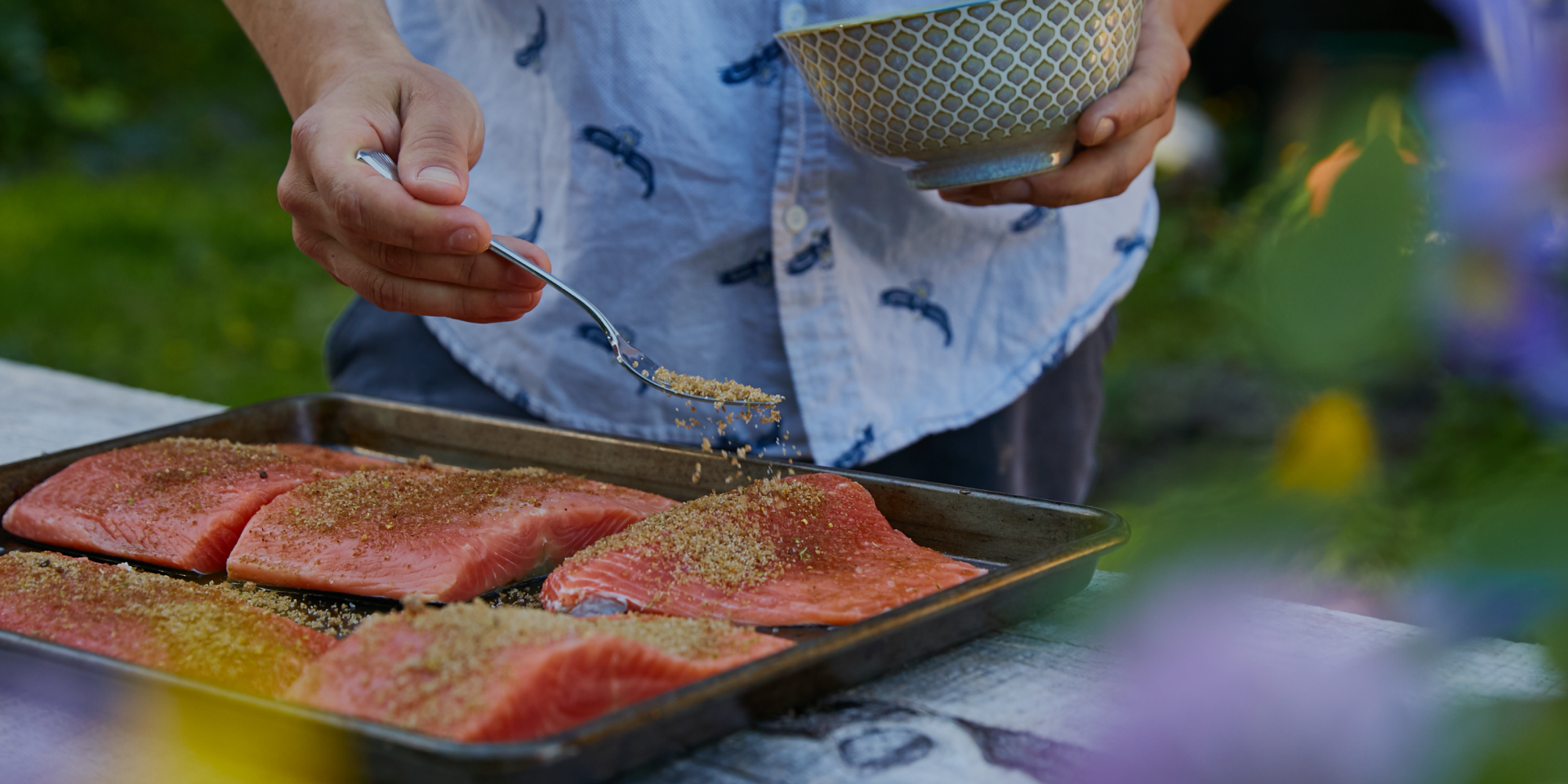We share a common fate with life in the sea.
The new reality is this: human activity has released enough carbon dioxide (CO₂) to fundamentally alter the chemistry of the earth’s air and water.
Take a deep breath. Each lungful of air actually contains 37% more CO₂ than it would have had 100 years ago. The ocean absorbs this CO₂, making it more acidic and less hospitable for marine life.
Scientists call this process ocean acidification, and it’s changing ocean life before our eyes.
In Alaska — a state that is bound tight to the ocean — ocean acidification is commonly heard on the docks, at our bars, and in our homes. “The oceans are changing,” fishermen will often say. Since the Industrial Revolution, humans have released billions of tons of carbon dioxide into the air through the burning of fossil fuels. The earth’s oceans have absorbed about half of this new carbon, becoming more acidic in the process.
We dedicate this issue of The Catch to helping our members understand the phenomenon of ocean acidification and to shed light on the changes it will bring to our oceans, our fisheries, and us.
Scientist Michael Kohan has spent decades studying Alaska’s marine environment. She says ocean acidification, or OA for short, makes the sea uninhabitable for some species. “OA affects the ability of shell-building organisms such as crab, oysters, urchins, corals, and certain zooplankton to build and maintain their shells,” she says. Without these shells, these important parts of the food web can’t develop properly. In turn, they can’t become food for the fish that we love to eat.
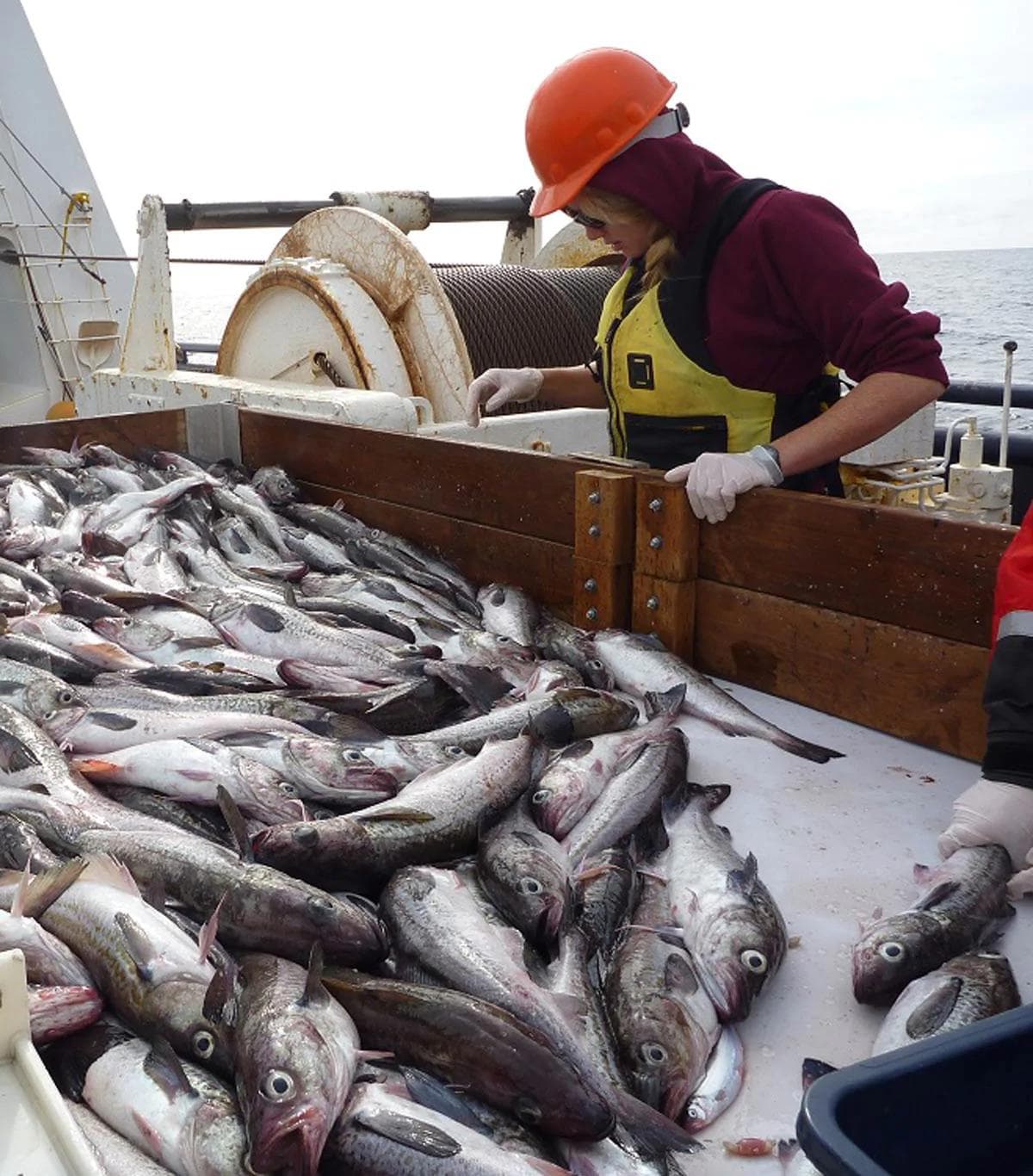
The pteropod, or “sea butterfly,” is a shell-building organism that provides nourishment for juvenile salmon as they mature in the North Pacific. Without these organisms to transfer deep water nutrients to salmon, the food web unravels.
The problem begins with the burning of fossil fuels, but Alaska’s fishing communities are innovating to confront this dilemma. Kohan notes that Alaska’s seafood processors are replacing diesel fuel with fish oil to reduce carbon emissions: “Fish oil used as fuel rarely has to be processed further, making it a convenient way to obtain better fuel efficiency.” Fishing communities throughout Alaska are decarbonizing to preserve their way of life. “Kodiak Island, which is the third largest seafood landing port by volume in the United States, gets over 99% of its energy from renewable sources, including wind turbines,” Kohan says. Thanks to recent initiatives, small-boat fishermen have access to energyanalysis tools that track energy efficiency and encourage adoption of electric-diesel hybrid fuel engines. While we have learned much from recent research, Kohan says we need more data: “Research and monitoring of OA in Alaska is in its nascent stage with much room to grow.”
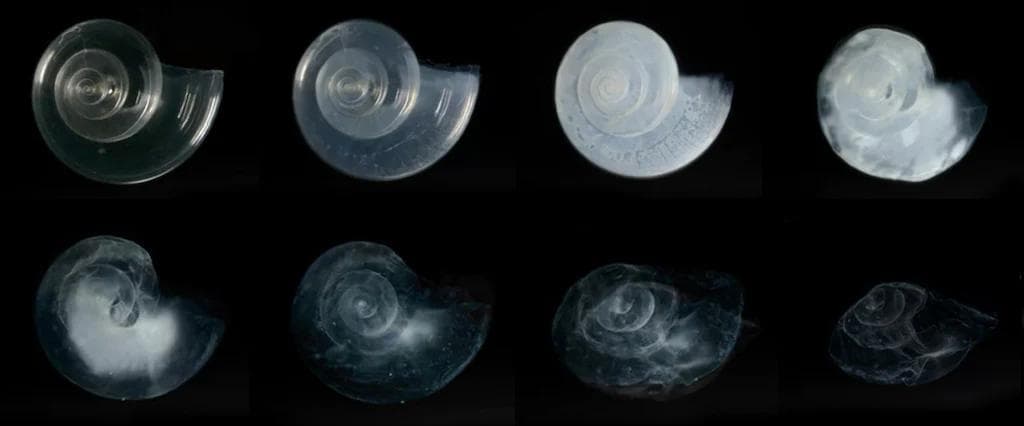
Shawaan Jackson-Gamble has spent the past five years collecting environmental data and restoring ecosystems around his hometown of Kake, a small Tlingit (pronounced “Klink-it”) community about 50 miles east of Sitka. “I was born and raised here. This is a Tlingit village where a lot of people rely on the traditional food we gather, such as fish and deer,” he says.
Even in my short lifetime I’ve seen changes.
Jackson-Gamble is a senior in the Native Environmental Science undergraduate program at Northwest Indian College. “Even in my short lifetime I’ve seen changes. The streams are a lot warmer with climate change, and we’ve seen fewer salmon,” Jackson-Gamble says. By collecting data from the waters around Kake, Jackson-Gamble and the other members of the Kake climate monitoring team are establishing a baseline for comparisons with future data as marine habitats shift with climate change.
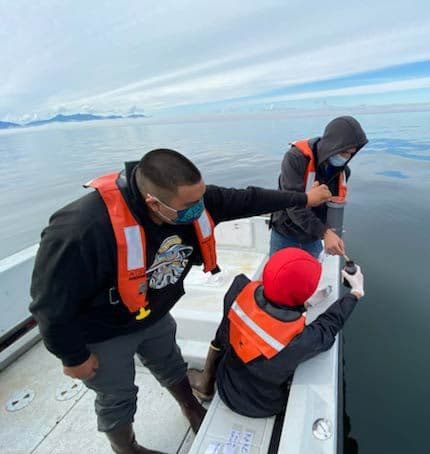
He also feels empowered by restoring habitats destroyed by logging and climate change. “My grandpa said it best: We are massaging our land from the damage done by logging,” he says. Indigenous practices have always honored the food webs that connect the land to the sea. Jackson-Gamble would like agencies such as the U.S. Forest Service to acknowledge and respect indigenous practices. “We’ve been here for over 10 thousand years,” he says. “With climate change, I’m worried about how the fish will be. The fish don’t have a voice,” he says.
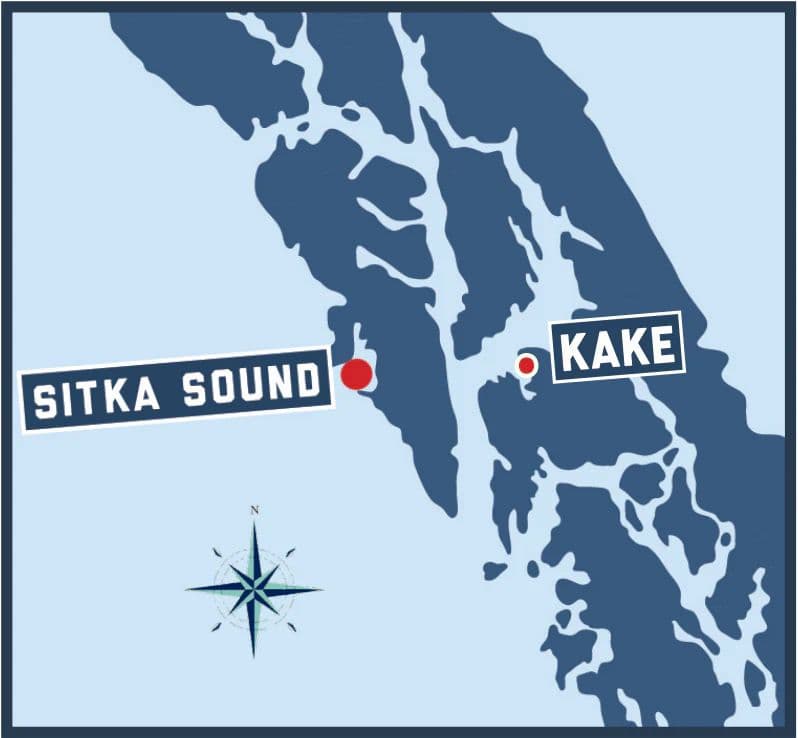
Salmon are adaptable, but they require habitats with a stable climate. Pacific salmon have been found as far south as present day Mexico, but rising global temperatures, habitat loss, and OA have forced salmon to retreat up the Pacific coastline. Southeast Alaska represents a rare sanctuary for marine species. The Tongass National Forest stretches for over 16 million acres — the largest protected U.S. forest and one of the world’s largest intact temperate rainforests.
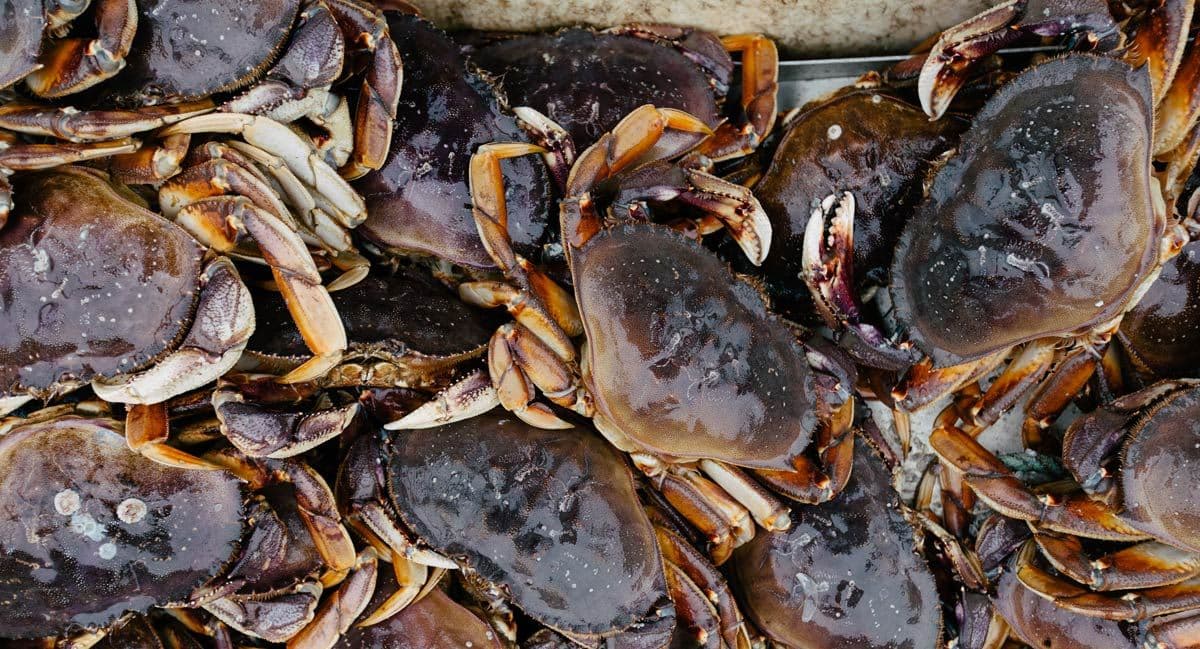
The future of interconnected terrestrial and marine habitats hang in the balance and our choices matter. Wild seafood remains one of the most climate friendly proteins, but it requires intact habitats and strong communities. At Sitka Seafood Market, we rely on the best scientific data to make responsible choices when it comes to seafood sourcing, and we are thankful for the stewardship of our fishermen-owners and trusted partners throughout Alaska, the hardworking scientists seeking answers, community organizations and tribes fighting to protect marine habitats, and our members, who are choosing a values-based seafood option committed to the wild.


